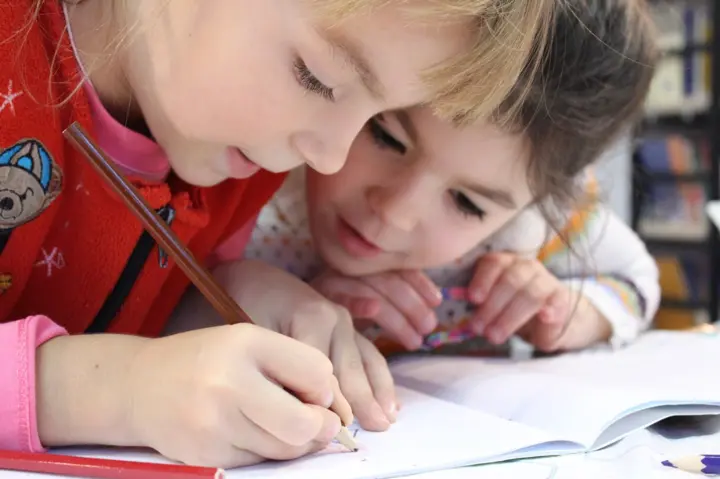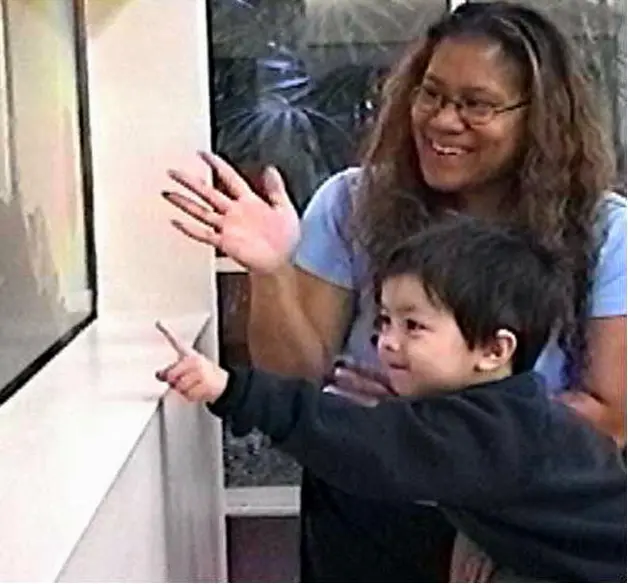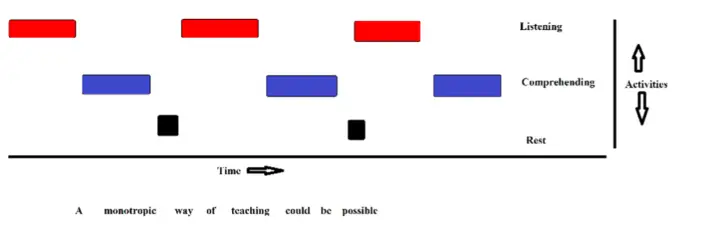Unexpected reading and writing skills in people with autism
Autism is a spectrum disorder that manifests in diverse ways, shaping the experiences and abilities of individuals in unique and often unexpected ways. Among the many remarkable talents that individuals with autism may possess are extraordinary reading and writing skills that defy conventional expectations. In this article, we delve into the fascinating world of unexpected reading and writing abilities among people with autism, shedding light on the remarkable talents and insights that can emerge from these individuals. Through personal stories, expert perspectives, and scientific research, we explore the complex interplay between autism and literacy, highlighting the potential for individuals on the spectrum to excel in the realms of language and communication.
Recommend
Show key points
- Autism is a spectrum disorder that affects individuals in diverse ways, often leading to unique and sometimes extraordinary abilities, especially in language skills.
- Many non-speaking individuals with autism possess underestimated literacy abilities, contrary to common misconceptions about their communication capacity.
- Researchers developed a game-based method, similar to Whac-a-Mole, to test written language comprehension in nonverbal autistic participants.
- ADVERTISEMENT
- The study revealed that over half of the non-speaking autistic individuals could predict letter sequences in familiar sentences, indicating foundational literacy skills.
- Nonverbal individuals with autism can communicate through alternative means such as sign language, gestures, or augmentative communication devices.
- These findings challenge outdated assumptions and highlight the importance of providing tailored literacy education to non-speaking autistic people.
- Promoting written communication can dramatically expand the educational, social, and employment opportunities available to individuals on the autism spectrum.
Why can't some people with autism speak?

Some children may have problems with auditory processing, the system through which their brains interpret the words they hear. Others may have difficulty with the motor skills needed to form words. For example, speech apraxia affects people's ability to plan and coordinate the mouth and tongue movements used to speak.
How do non-speaking autistic people communicate?

Sign language or macaton (macaton) is a language system that uses signs and symbols). Clap, flash, gesture and other kinetic gestures. Sounds – for example, they may scream when they feel happy or beaten when they feel stressed. Touch – For example, they may touch someone's face to express affection.
Can a nonverbal autistic person read?

He can form sentences using augmentative communication. Many people mistakenly assume that children who do not speak cannot learn to read. But this is definitely not true!
Can non-speaking autistic people learn to speak?

Some may develop language and communication skills later than their peers, and some may develop their language in a different order. Some children with autism will develop spoken language in a typical way, but they may need support in other areas of communication, such as social communication or fluency.
Non-native individuals with autism may have undervalued literacy skills, suggesting the potential for written communication as an expressive alternative. By adopting an innovative method similar to Whac-a-Mole, the research team demonstrated that a large portion of non-native autistic participants could predict the sequence of letters in sentences, suggesting foundational understanding of written language. This discovery challenges traditional assumptions about the cognitive abilities of non-native speakers with autism and highlights the importance of providing targeted literacy education to enhance their communication choices. The findings emphasize the need to reassess education and support strategies for individuals with autism who cannot speak, and to open new horizons for their inclusion and participation in society.

As mentioned earlier, the study found that non-native individuals with autism showed a much higher understanding of written language conventions than previously thought. When the researchers used a tablet-based game to measure participants' ability to predict the sequence of letters, they revealed the literacy competencies of more than half of non-native autistic participants.
Potential for written communication: The findings call for exploring forms of written communication to open up educational, employal, and social opportunities for non-speaking people with autism. The study, published in the Journal of Autism, indicates that the number of adolescents and adults with autism who do not speak showed knowledge of written language with five measurement conventions than would have been expected from previous estimates of their abilities. The discovery has important implications for millions of people with autism around the world who have little or no ability to speak, and who are often assumed to be unable to gain literacy.

Vikram Gaswal, a professor of psychology at the University of Virginia, says, "If we assume that a person who can't speak doesn't understand, that limits the doors we open to them — and maybe we don't even try to figure out what they understand."
"Our study shows that the ability of non-native speakers of autism to speak, learn, and literacy has been seriously underestimated."
The researchers addressed a fundamental question about literacy: whether non-native autistic people interact with letters, words, and sentences in the same way that educated and non-autistic individuals do. The Gaswall team has developed a method similar to the arcade game Whac-a-Mole that requires participants to tap on the characters displayed on the tablet as soon as they read those letters. In some cases, letters lit up in sequences showing sentences previously heard by participants aloud, and in other cases letters lit up in meaningless sequences.

The research team, which included PhD candidate Kayden Stockwell and recent graduate Andrew Lambey, hypothesized that an educated individual – who knows how to spell and can convert speech into its written form – can predict the next letter in the sentence they write. I heard a loud speech even before seeing that message light up. Thus, they are expected to respond to sentences faster than to meaningless sequences. Gaswal's team found that more than half of the sample group of 31 non-speaking autistic participants responded in the same way as an educated individual.
According to Gaswal, the results are striking because they show that although most study participants did not receive formal literacy education, many developed an understanding of how written language works.
"Society has traditionally assumed that people who cannot speak are unable to understand a language or learn to read or write," says Gaswal. But our findings suggest that many non-native autistic people have basic literacy skills. With the right education and support, it may be possible to harness these skills to provide access to written forms of communication as an alternative to speech.
"Learning to express themselves through writing would open up educational, employable, and social opportunities that non-historically speaking people with autism did not have access to."
Christa Acampura, dean of the college and graduate school of arts and sciences, said: "This is cutting-edge research with enormous potential for impact. "We are truly fortunate to have Professor Gaswall and outstanding postgraduate students such as Cayden Stockwell and Andrew Lambie in the college's research community. Together, they ask important questions, and their discovery will have life-changing consequences.
![]()
Uranus may have a hidden ocean: the discoveries of the James Webb Space Telescope
The James Webb Space Telescope may have discovered a hidden ocean beneath Uranus’ moon Ariel, sparking excitement about possible extraterrestrial life. Its powerful infrared technology revealed water ice, salts, and organics—clues to a potentially habitable environment under the icy surface. more- ADVERTISEMENT
![]()
The ten most lonely things in the world
The loneliest whale in the world sings at a frequency no other whale can hear. The only tree in a 400 km stretch of desert was hit by a drunk driver. A little robot named Curiosity sings “Happy Birthday” to itself every year on Mars. more- ADVERTISEMENT
![]()
The Power of Nature: Learn about the forces behind a living volcano
Living volcanoes are powerful natural wonders—windows into Earth’s fiery depths. They dazzle with beauty, yet threaten with eruptions. From shaping landscapes to offering geothermal energy, they reveal nature’s immense force. By studying their behavior, we can better predict their eruptions and harness their energy for a safer, sustainable future. more- ADVERTISEMENT
![]()
Which determines whether it smells good or bad?
Your nose can detect thousands of scents thanks to millions of odor receptors, shaping your experiences and memories. Smells trigger emotional responses, connect to past events, and even signal danger—like the foul scent of rotten eggs. From birth, our genes and experiences guide how we react to different odors. more- ADVERTISEMENT
![]()
The most famous technical myths spread among us around the world
Technical myths limit our thinking and block progress. They spread easily through social media and false beliefs. From AI fears to 5G rumors and mobile phone misconceptions, many myths lack proof. We all need to think critically, stay informed, and help others recognize the truth about today's technologies. more- ADVERTISEMENT
![]()
Habits of remarkably calm people
Remarkably calm people aren't born that way—they build habits like mindfulness, deep breathing, and regular exercise to stay composed. They also focus on positive thinking, good sleep, and managing time well. These simple yet powerful habits help them stay cool even when life gets stressful. more- ADVERTISEMENT
![]()
The mysterious abandonment of Cahokia: The Lost City of Ancient America
Once a bustling hub near the Mississippi River, Cahokia was North America's largest pre-Columbian city, known for its massive Monks Mound and smart urban planning. By the 14th century, it was mysteriously abandoned, leaving behind ruins that still intrigue archaeologists and visitors today. more- ADVERTISEMENT
![]()
Extremely large telescopes: the next big thing in astronomy
Giant telescopes like the upcoming ELT and GMT are set to unlock deep cosmic secrets—from the first galaxies to possible signs of life on exoplanets. These powerful tools promise stunning discoveries and a clearer understanding of our universe’s origins and mysteries. more- ADVERTISEMENT
![]()
How to price your product? Best Pricing Strategies
Finding the right price for your product is key to profit and customer satisfaction. Try different strategies—like cost-based, value-based, or psychological pricing—and stay flexible. There's no one-size-fits-all method, but aligning your price with customer needs and market factors is the smart move. more- ADVERTISEMENT
![]()
How to learn any language in a short time? 8 practical tips
There’s no quick fix for learning a language, but with steady effort and the right methods—like setting goals, practicing daily, or using apps like Duolingo—you’ll improve with time. Surround yourself with the language and focus on real-life use rather than just grammar. more- ADVERTISEMENT





















